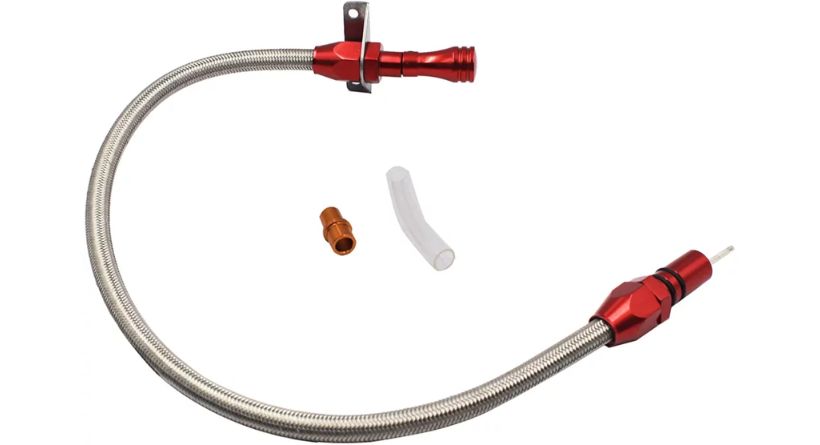If you’ve ever maintained or repaired a vehicle, you know the importance of its transmission system.
One essential component that often goes unnoticed is the tranny tube.
Despite its simple design, this part plays a critical role in ensuring that your vehicle runs smoothly and efficiently.
In this article, we’ll explore what a tranny tube is, its different types, and how to choose the right one for your vehicle.
By the end, you’ll have a clear understanding of how these tubes function and how they can enhance your car’s performance.
What Is a Tranny Tube?
A tranny tube (short for transmission tube) is a stainless steel or heat-resistant pipe designed to prevent torque converters from malfunctioning.
Specifically, it prevents a condition known as torque converter shudder, which can cause a vehicle to shake and lose power when driving.
Tranny tubes are used in automatic transmissions to maintain the flow of transmission fluid, helping to cool and lubricate the system.
If you drive in rough or dusty conditions, this small but essential tube acts as a barrier against debris that could otherwise clog the system and lead to serious issues.
The Role of a Tranny Tube
Tranny tubes are more than just simple pipes—they protect vital parts of your transmission system.
The tube channels transmission fluid to and from the torque converter, preventing overheating and ensuring smooth gear shifts.
Without proper maintenance or a functional tranny tube, your transmission system could overheat or malfunction, leading to costly repairs.
A tranny tube also ensures proper fluid levels, which is crucial for your transmission’s longevity.
By keeping transmission fluid flowing efficiently, it helps reduce wear and tear on your vehicle’s internal parts, ensuring they remain lubricated and cool.
Also Read: Everything You Need to Know About Canvas Pfisd Login: A Comprehensive Guide
Types of Tranny Tubes
Not all tranny tubes are the same. Depending on your vehicle and usage, there are several types to choose from. Let’s break down the most common options.
PTFE Tranny Tube
A PTFE tranny tube is made from a material known for its high heat resistance, as well as its ability to withstand chemicals and extreme temperatures.
These tubes are widely used in industrial applications because of their durability. If you drive in extreme weather conditions or own a heavy-duty vehicle, a PTFE tranny tube may be the best choice for you.
Key Benefits:
- Extremely resistant to heat and chemicals.
- Ideal for heavy vehicles or extreme conditions.
- Long-lasting and durable.
PVC Tranny Tube
A PVC tranny tube is the more affordable option, often used in light vehicles.
These tubes are not as heat resistant as PTFE but are still functional for most regular vehicles that don’t face harsh conditions.
For everyday commuting or light vehicle use, PVC tubes are a budget-friendly and practical solution.
Key Benefits:
- Cost-effective.
- Suitable for light vehicles and moderate conditions.
- Easy to install and replace.
Stainless Steel Tranny Tube
For those who want top-tier quality and durability, the stainless steel tranny tube is an excellent option.
It is resistant to rust and corrosion, making it ideal for vehicles exposed to moisture, dust, or heavy loads.
Stainless steel tubes are highly durable and are often used in larger vehicles or trucks that operate in demanding environments.
Key Benefits:
- High resistance to rust and corrosion.
- Excellent heat resistance.
- Long-lasting and suited for heavy-duty use.
Why Your Vehicle Needs a Tranny Tube
When it comes to vehicle maintenance, many people overlook the importance of their transmission system.
The torque converter is a key component of this system, responsible for transferring power from the engine to the drivetrain.
Without a properly functioning tranny tube, dust, dirt, and other contaminants can clog the torque converter, leading to shuddering or complete system failure.
By installing a tranny tube, you protect the torque converter from dirt and debris.
This not only prevents performance issues but also improves lubrication, reduces wear and tear, and extends the life of your transmission.
Enhanced Lubrication
A properly functioning tranny tube ensures that transmission fluid is efficiently circulated.
This fluid is vital for keeping all moving parts lubricated and cooled. Without sufficient lubrication, friction builds up, leading to overheating and potential damage.
A good tranny tube keeps your vehicle running smoothly, allowing for seamless gear changes and preventing overheating.
Improved Vehicle Performance
The second benefit of having a well-maintained tranny tube is improved overall vehicle performance.
When your transmission system operates without issues, you’ll notice smoother gear shifts and better fuel efficiency.
Additionally, a well-lubricated system can handle higher loads and stress, making it ideal for those who drive in tough conditions or haul heavy loads.
Also Read: SmiHub Review: SMIHUB IS How to Use Instagram Story Viewer Tools
How to Choose the Right Tranny Tube
Choosing the right tranny tube is crucial for your vehicle’s performance. To make an informed decision, consider the following factors:
Vehicle Type and Size
The first thing to consider when choosing a tranny tube is your vehicle’s size and type.
Larger vehicles, like trucks and SUVs, will require a more robust tube, such as stainless steel or PTFE. Lighter cars, on the other hand, can get by with PVC tubes.
Also, consider your vehicle’s usage. If you frequently drive in extreme weather or off-road conditions, invest in a durable tube that can withstand wear and tear.
For those who stick to urban driving, a standard PVC tube may be more than enough.
Material Quality
The material of the tranny tube is another crucial factor. Stainless steel offers superior resistance to rust and corrosion, while PTFE can withstand extreme heat.
If your vehicle is often exposed to moisture or high temperatures, investing in a high-quality material is essential.
While stainless steel tubes tend to be more expensive, their longevity and performance make them worth the investment.
Tube Flexibility
The flexibility of the tube determines how easily it can be installed and maneuvered within the tight spaces of your vehicle’s transmission system.
A flexible tranny tube, such as those made from stainless steel, is often preferred because it can bend and adjust without breaking.
This is particularly useful if your vehicle has a complex transmission system layout.
Maintaining Your Tranny Tube
Once you’ve selected and installed the right tranny tube, regular maintenance is key to keeping it in top condition.
Here’s how to ensure your tranny tube continues to function effectively:
Regular Inspection
Check your tranny tube regularly for any signs of wear, leaks, or corrosion. If you notice any cracks or visible damage, it’s time to replace the tube.
Failing to address these issues can lead to transmission fluid leaks, which can cause the transmission to overheat or fail.
Monitor Fluid Levels
Keep an eye on your transmission fluid levels. Low fluid can cause your transmission to overheat and lead to long-term damage.
Use the dipstick to check fluid levels regularly and top off as needed. If you notice discolored or burnt-smelling fluid, this could indicate a problem with your transmission that needs immediate attention.
Replace Fluid When Necessary
Over time, transmission fluid can become contaminated or break down. This reduces its ability to lubricate and cool the system.
Make sure to replace your transmission fluid at the intervals recommended by your vehicle’s manufacturer.
This is particularly important if you drive in extreme conditions or put heavy loads on your vehicle.
When Should You Use a Tranny Tube?
A tranny tube should be used whenever there are signs of transmission issues, such as grinding noises, shuddering while driving, or difficulty shifting gears.
By ensuring your transmission system is well-maintained and using the right tranny tube, you can avoid these problems and enjoy a smooth driving experience.
Tranny tubes are also beneficial in heavy-duty vehicles, where the transmission system is subject to higher stress and strain.
If you’re someone who frequently tows trailers or carries heavy loads, a high-quality tranny tube can help maintain the efficiency of your vehicle’s transmission and prolong its lifespan.
Conclusion
Maintaining your vehicle’s transmission system is critical for long-term performance, and the tranny tube plays a crucial role in this process.
By choosing the right type of tranny tube for your vehicle and ensuring it’s regularly maintained, you can protect your transmission from damage, improve lubrication, and extend the lifespan of your car.
Whether you’re driving a light vehicle for city commutes or a heavy-duty truck on rough terrain, selecting a durable and flexible tranny tube will make a noticeable difference in your vehicle’s performance.
Follow the tips in this guide to choose the best tranny tube for your needs and keep your car running smoothly for years to come.
FAQs
Q: How often should I replace my tranny tube?
A: Tranny tubes can last a long time, especially those made from durable materials like stainless steel. However, you should inspect them regularly for wear and replace them if you notice any leaks or cracks.
Q: What is the best tranny tube material?
A: Stainless steel is often considered the best material due to its resistance to heat and corrosion. However, PTFE tubes are also great for heavy-duty use due to their chemical resistance.
Q: Can a damaged tranny tube cause transmission failure?
A: Yes, a damaged tranny tube can lead to transmission fluid leaks, causing the system to overheat and fail. Regular inspections are important to prevent this.


